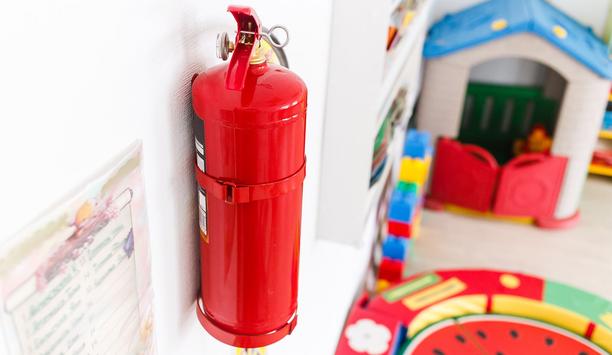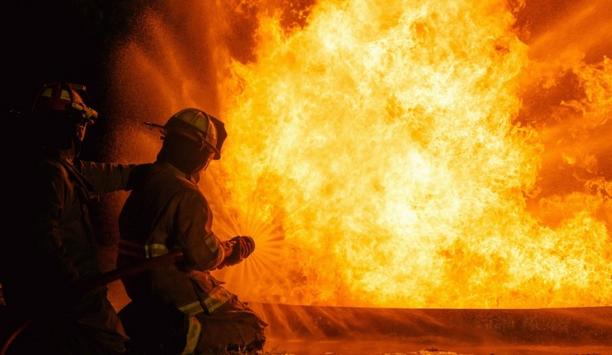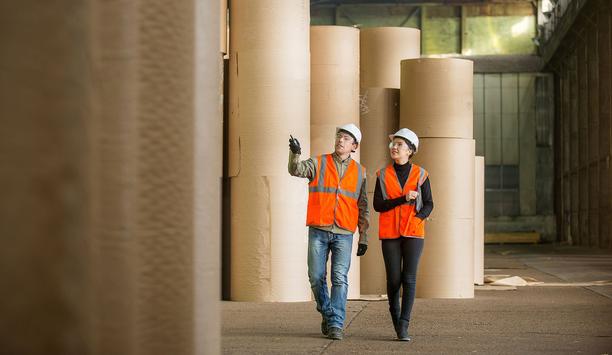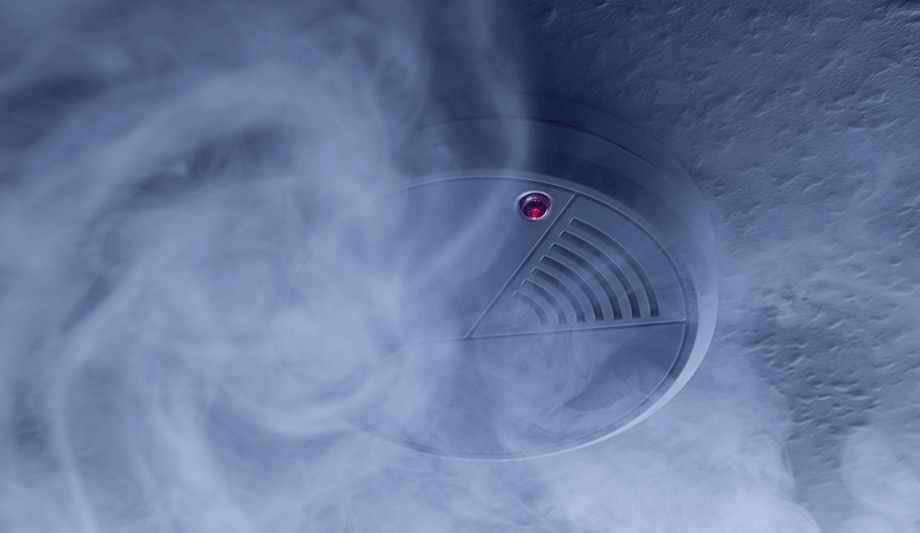Cheshire Fire & Rescue Service - Experts & Thought Leaders
Latest Cheshire Fire & Rescue Service news & announcements
BAFSA has applauded Cheshire Fire Authority’s recent investment of £36,000 in sprinklers to help protect a newly renovated block of flats in Warrington, United Kingdom (UK). To date, Cheshire Fire Authority has invested over £200,000 in retrofitting sprinklers in high-rise blocks across the county and this most recent project is the 18th building they have helped protect from fire. Sprinkler retrofit work at Kingsway House The installation of the sprinkler system in the building will protect the 53 homes The eight-story Kingsway House on Kingsway South in Latchford was officially re-opened on Friday 8 March 2024, after an extensive £6.3 million refurbishment project managed by Torus Group. The installation of the sprinkler system in the building will protect the 53 homes, and the many people that will live there, from fire. BAFSA’s Chief Executive, Ali Perry, said “It’s fantastic to see such proactive work by Cheshire Fire Authority to complement the operational service they already provide to the community. This forward-thinking approach will undoubtedly save lives.” Need for sprinkler retrofits for old premises Steve McCormick, Cheshire Fire and Rescue Service’s Head of Prevention and Protection, commented: “We’re encouraging decision makers to consider fitting sprinkler systems in all new builds, as well as retrospective fitting in older premises. We want to dispel the myth that they are hugely expensive – the cost of installation and the benefits they bring far outweigh the cost of destruction and potential loss of life and livelihoods caused by fire.” Cllr Stef Nelson, the Chair of Cheshire Fire Authority, stated, “We have all seen the total devastation a fire in a tower block can cause and we are committed to working with our social housing partners to provide the best possible protection for residents.” Retrofitting of sprinklers at the Callow Mount BAFSA lent its support to South Yorkshire Fire & Rescue Service’s retrofitting of sprinklers at the Callow Mount high-rise block in 2011. A report was compiled on the project outlining that fact that retro-fitting sprinklers in not cost-prohibited or disruptive to residents.
The owners of a care home have been fined £60,000 for breaching fire safety regulations after a 90-year-old resident accidentally set fire to himself while smoking. Ashberry Healthcare Ltd, the former owner of Heathercroft Care Home in Woolston, was charged with failing to comply with the Fire Safety (Regulatory Reform) Order 2005 at Warrington Magistrates’ Court on 11 October 2022. Outside smoking shelter It follows a tragic incident that occurred in May 2018, when resident Henry Robinson accidentally set fire to himself in an outside smoking shelter. Staff at the care home called firefighters for assistance, but Mr Robinson later died of a heart attack on the way to the hospital. Two defects in the building’s compartmentation were also found The care home owners have not been prosecuted for Mr Robinson’s death, but a number of fire safety deficiencies were identified. In their audit, the inspecting officers from Cheshire Fire and Rescue Service (CFRS) discovered that the individual risk assessment ‘to enable Mr Robinson to smoke safely’ had been misplaced. Two defects in the building’s compartmentation were also found, which could potentially lead to the rapid spread of smoke and fire in the event of a blaze. Individual risk assessments The Assistant Chief Fire Officer for CFRS, Lee Shears, said: “This has been a very distressing case for the firefighters who attended the fire, the care staff at the home, ambulance crews, and our inspecting officers. Our thoughts are with Mr Robinson’s loved ones.” Lee Shears adds, “His final moments serve as a reminder to care providers of the importance of having in place – and, more importantly, following – detailed individual risk assessments for all residents who smoke. They are particularly vulnerable if they have mobility problems or are treated with emollient creams, which make skin, clothing, and bedding highly flammable.” Individual risk assessments Three minutes and 43 seconds for anyone to respond to him pressing the shelter’s call button" Lee Shears continues, “We work hard to help care providers to understand their responsibilities when it comes to fire safety, but as this tragic case highlights there are serious consequences for failing to comply.” Judge Jack McGarva said that while allowing Mr Robinson to smoke unsupervised was not the direct cause of his death, the deficiencies of the current system meant that it took “Three minutes and 43 seconds for anyone to respond to him pressing the shelter’s call button”. He added that this was ‘unforgivable.’ Ashberry Healthcare Ltd was ordered to pay a total of £62,000 in penalties alongside £17,500 in costs. Long-Standing resident A spokesperson for Ashberry Healthcare Ltd said: “Ashberry Healthcare Ltd again extends its condolences to the family of Henry Robinson following his death from a heart attack in May 2018, when the home was under previous ownership. We know that Mr Robinson was a much loved and long-standing resident at Heathercroft and that he was greatly missed by the staff at the Home.” “As the new owners of Ashberry Healthcare Ltd, we felt it was appropriate to plead guilty to three alleged breaches which related to the fire regulation of the building – none of which were identified as a cause in Mr Robinson’s death. The remaining four alleged breaches were dropped by Cheshire Fire and Rescue Service.” Recent legal proceedings “Two of the breaches for which we pleaded guilty concerned a separate part of the building which was unrelated to the area in which Mr Robinson was smoking. Improvements were made to the fire compartmentation in these parts of the building at the time, resolving the issues. The third breach concerned a management issue which has since been resolved.” “As confirmed in the recent legal proceedings, Mr Robinson did have in place an Independent Smoking Risk Assessment which, in line with his and his family's wishes, meant that he was able to smoke unaccompanied. Following this tragic historic incident, we carried out a thorough review of all our services. We remain committed to providing high-quality care, putting our residents’ safety and wellbeing at the forefront in everything we do.”
The owner of the Main Top Hotel on Mersey Road in West Bank, Widnes, was sentenced at Liverpool Crown Court on 28 April, after pleading guilty to nine breaches of the Regulatory Reform (Fire Safety) Order 2005. William Scott Anthony Hanson, of Cooper Street, Widnes, was brought charges after being served a Prohibition Notice, following an inspection in June 2019, which Hanson did not comply with. Fire safety breach When Cheshire Fire and Rescue Service (CFRS) officers undertook the initial inspection, they found evidence of serious deficiencies and breaches of the Fire Safety Order, including missing fire doors, no working fire alarm, emergency lighting not properly maintained, combustible materials stored in escape routes, and no fire doors separating the kitchen from guest bedrooms. Fire compartmentation was also found to be inadequate, fire extinguishers were not properly maintained, and Hanson had not undertaken a fire risk assessment or made an emergency evacuation plan for the hotel. Lack of fire risk assessment He was also ordered to pay £5,000 in costs and complete 35 days of rehabilitation The resulting Prohibition Notice from CFRS banned the Main Top from being used as accommodation until adequate steps had been taken to make the hotel safe. However, on a follow-up visit in August 2020, inspectors found four guests staying at the hotel, and conditions had not improved. Judge Garrett Byrne said Hanson put “profit before safety,” and left customers at risk of serious injury or death, describing Hanson’s failure to comply with the prohibition notice as “cynical” and “flagrant”. Hanson was sentenced to 12 months in prison, suspended for two years, for breaking fire safety laws. He was also ordered to pay £5,000 in costs and complete 35 days of rehabilitation and 80 hours of unpaid work. Fire safety Lee Shears, CFRS’s Head of Prevention and Protection, said, "Fire safety is a key part of good business management and Mr. Hanson showed little or no regard for the safety of the guests sleeping at the Main Top Hotel." He adds, “This was compounded by the fact that he ignored the prohibition notice and failed to take our advice to make the premises safer. We always aim to help and support any business to operate safely, however, this case shows that we will take action when fire safety responsibilities are not taken seriously."
Insights & Opinions from thought leaders at Cheshire Fire & Rescue Service
The UK Fire Service is called out to extinguish fires in approximately 1,500 UK schools per year. Regardless of their size, these incidents disrupt the education of around 90,000 students each year, not to mention the economic strain caused by building damages. But most significant of all, these fires compromise safety. The government recently opened a consultation on proposed revisions to its non-statutory fire safety guidance in schools. Building Bulletin 100 The Building Bulletin 100 (BB100), as it’s known, was first introduced in 2007 and considers school building design, crucially advising on how to minimize the spread of fire and make the structure adequately resistant to fire. Yet, with many raising concerns over the guidance, the BB100 requires updating and simplifying. Specifically, the BB100 has been called out for “falling short” on active fire protection methods such as sprinklers - which in newly built school facilities have seen a reduction in installation from 70% in 2007 to around 15% today. With schools back at full capacity and this renewed focus on legislation, passive fire protection methods, such as fire doors and their hardware, must also be considered to deliver a complete, fire safety package. fire safety standards Decision-makers must be proactive in improving the fire safety standards within their school buildings As the Department of Education seeks views on the revised BB100 reform, decision-makers must be proactive in improving the fire safety standards within their school buildings. Naturally, fires are unpredictable and can begin in and out of school hours and across various areas of the premises - from food tech rooms to chemistry labs where combustible materials are held. And for some local authority fire brigades, arson is also a common offense, accounting for up to 70% of incidents in school environments. Legislation and liability In the event of a fire, should a school be considered unsafe or in breach of the Regulatory Reform (Fire Safety) Order 2005, it is in danger of receiving heavy penalties and fines - not to mention the risk of a damaged reputation. In a bid to remain compliant, decision-makers must approach fire safety as an ongoing process, habitually managing all areas of fire safety within their facilities to be prepared for all contingencies. Ensuring fire safety in buildings and schools This is demonstrated in the Regulatory Reform (Fire Safety) Order 2005, where it’s stated all workplaces must designate a Responsible Person (RP) to ensure their building is prepared in the event of a fire. This responsibility can often be shared within education environments, and in local authority schools, for example, accountability can be shared between the headteacher and the authority. Conversely, in private or independent schools, the responsibility often lies with the building owner. As part of their obligations, the RP must manage the ongoing compliance with fire safety legislation, while ensuring all fire systems and procedures, including fire drills, are uncompromised. Additionally, the RP must possess a robust knowledge of fire safety to manage and perform regular fire safety risk assessments. Constant protection A fire safety risk assessment is designed to help identify the fire hazards within educational premises A fire safety risk assessment is designed to help identify the fire hazards within educational premises. When completing a risk assessment, the RP must inspect everything from fire-fighting equipment and fire doors to staff training and pupil understanding towards the school’s procedures in the event of a fire. As highlighted by the Cheshire Fire and Rescue Service, a fire risk assessment consists of five steps: Identify the people at risk Identify all potential fire hazards Evaluate the risk Record the findings Review and revise Various areas of a school’s fire protection systems are assessed under the evaluation of risk stage, including fire detection methods and emergency escape routes. Escape routes, for example, are fundamental in the event of a fire and rely upon passive fire protection methods, such as fire door sets, that will require ongoing assessment and maintenance to ensure they operate as intended. fire door for a safe environment Under The Fire Safety Order 2005, fire door sets in the education sector are a legislative requirement and form a critical role in providing a safer educational environment. Emergency exits conclude escape routes and should be assembled with ‘fire rated’ doors, which can be rated to FD30 or FD60 and will delay the spread of smoke and fire by 30 and 60 minutes respectively. As part of the risk assessment process, the correct location of all fire doors - whether FD30 or FD60 - is determined based on the risk of the area (FD60s are more likely to be installed in kitchen areas for example). Maintenance of fire doors A British Standard sign must be attached to the face of the door on both sides, representing FDKS and AFDKC All fire doors located within the school building should also be signed appropriately. A British Standard sign must be attached to the face of the door on both sides, representing FDKS and AFDKC (1.5m from the floor). Above all else, fire doors must be fully functional. In the circumstance of a fire, fire doors must close completely and independently, and their hardware - including hinges, handles, door closers, locks, and signage - is correctly installed and maintained. Upon inspection of a fire door, the RP must review the certification, gaps, seals, hinges, and closing elements to ensure all is functioning appropriately. Routine fire safety checks Passive fire protection is described as the backbone of fire safety, and so, in the event a fire door is identified as defective, maintenance must be carried out promptly and professionally, as this will retain the integrity of the escape route and compartmentation. Fire doors and their hardware form just one element of a successful fire safety strategy, and thus are only one stage of a fire risk assessment. Yet, these simple, routine checks can help save lives and livelihoods. It’s true, fire safety is a primary responsibility for schools, and it should never be overlooked.
Thermal imaging is an advantageous tool for firefighters on the frontline. As thermal cameras have become more compact and affordable, their availability has expanded, along with their usefulness. We asked our Expert Panel Roundtable: How does thermal imaging serve the needs of firefighters and how is it changing?
The New Future For Fire Agencies
DownloadThe Eight Key Trends in Fire Detection in 2023
DownloadA Digital Platform to Improve Fire Safety Compliance and Inspections
DownloadOvercoming the Challenges of Fire Safety in the Paper Industry
DownloadCarbon Monoxide: Creeping Killer Caught In The Act
Download













